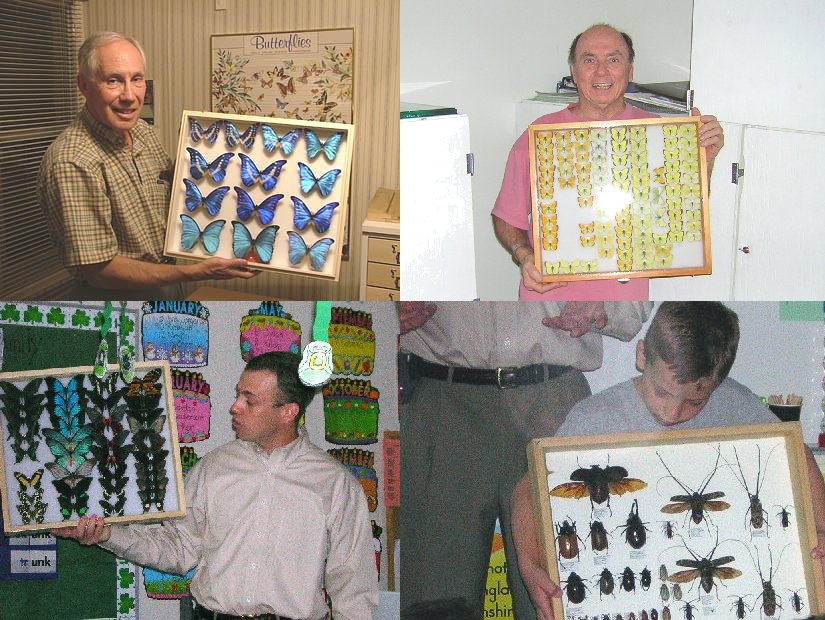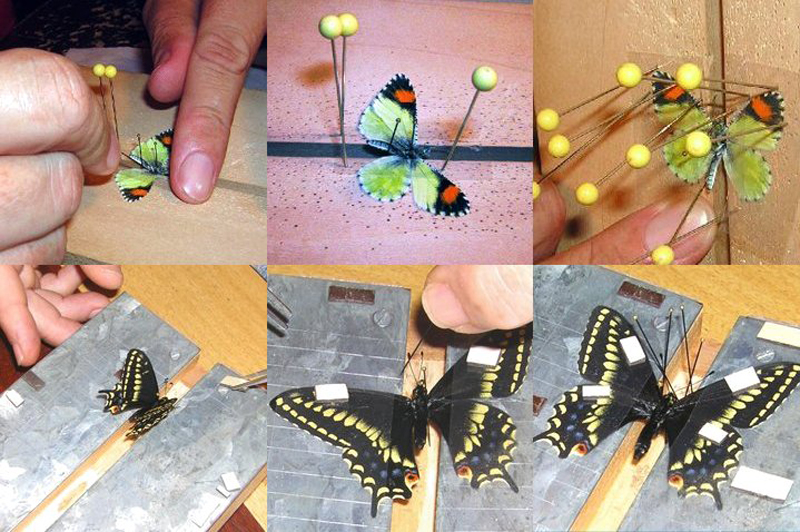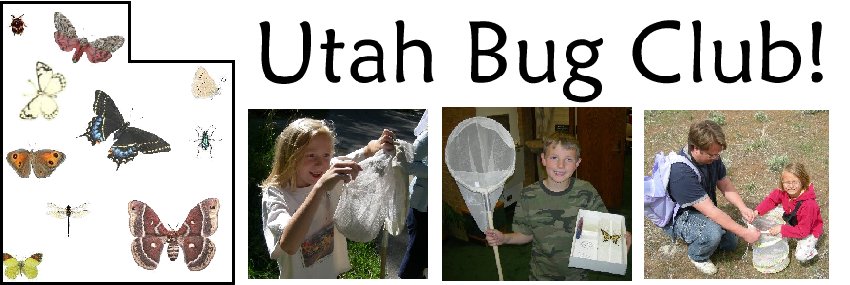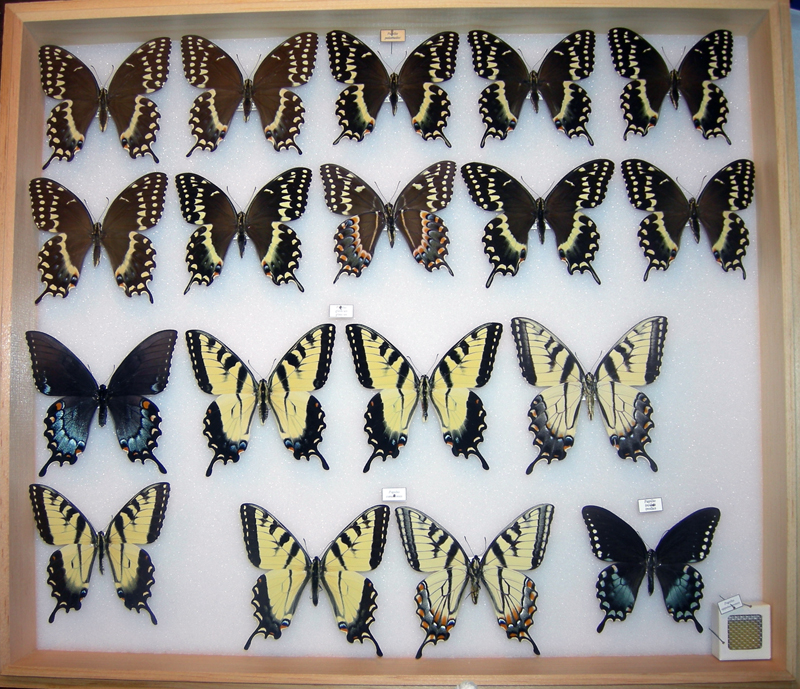Starting a Collection
If you're interested in building a butterfly collection, attending Utah Bug Club meetings is a great start to learn the basics about where you can find local butterflies and how to mount them. During the spring, weather cooperating, we introduce you to how to find and identify locally common butterflies in our canyons during the first meeting and field trip and how to mount collected butterflies during our second meeting.
Some families prefer to release collected butterflies in the field; which is totally acceptable as a family decision. However, if you are interested in starting a basic butterfly collection, The Outernet Kit provides the necessary tools to get started. Again, this kit consists of a small butterfly net, styrofoam mounting board, a set of insect pins, pinning strips, a mounting box for pinned specimens, 50 glassine envelopes to store specimens, and a plastic container to raise caterpillars.
UBC students and families serious about collecting, photographing, or raising butterflies are encouraged to participate in Utah Lepidopterists' Society meetings and Utah Butterfly Field Trips in addition to UBC meetings and field trips.
The
best way to kill any insect to place it in a killing jar that has been charged
with ethyl acetate. To charge a jar, pour about 1 oz. of ethyl acetate
into jars, screw on lid and wait 20 minutes until plaster is fully saturated,
then drain off any remaining liquid. Killing jars and other butterfly
equipment can be found at Bioquip. If you
have collected a butterfly or moth, another method is to gently but firmly pinch
the thorax and place it into a glassine envelope. (Fifty envelopes are
provided in The Outernet Kit.) This will stun the
butterfly or moth. Later on, place the glassine envelope into a protective rubbermaid-type sandwich container
and place the container in a freezer. Keeping dead specimens in a freezer
helps to maintain their moisture for as long as possible making it easier to mount them later. When
you are ready to mount your specimen, make sure that you have A) a syringe
filled with water to loosen up the specimen B) a mounting board
C) mounting pins D) 1.5 mil laminating film cut into small rectangular
pieces [loose scrap from your school laminator works fine] E) an insect pin and
F) your specimen.
Click
here
for Vernon Evan's online presentation on how to mount butterflies.
Once you take your pinned specimens off of the mounting board, you are now ready to
display them. You can either display them in a cigar box, riker
mount, field boxes, storage boxes, or an museum insect drawer. If you
cannot afford any of these, many large paper stores sell self-construct boxes
that serve as nice displays for bugs for about $1 each. Again, The
Outernet Kit provided also has a nice storage box to house pinned specimens. As your
collection grows, you can start displaying your material first by family, then
by genus, and finally by species.
Mounted butterflies have no scientific value unless they are are attached with data
labels to every specimen collected.
This is important should a collection ever be donated to a museum.
Data labels help confirm species distribution and taxonomic identity. It is easy to print labels using MS
Word or any other word processor onto a laser
printer. It is best to print labels onto cardstock paper to insure that
they will last for a very long time. Some entomologists use 110 weight exact index cardstock, cutting out the label, and then
placing it through an insect pin underneath the mounted specimen. The
breakdown of the data label is as follows: Line
1: <Genus> <species> <gender> Line
2: <altitude> <date> Line
3: <general location> Line
4: <distance from fixed well known topographical feature> Line
5: <name of collector><county> <state>
Sample data labels Line 1: <Genus>
<species> <gender> Out in the
field, it is
always a good idea to keep a copy of a reliable field guide with you so that,
not only can you identify the common name of a species you collected; but also,
you can learn the scientific name that will be documented onto your data
label. An outstanding butterfly field guide for this purpose is "Butterflies
of North America," by Brock and Kaufmann. The
internet can also provide valuable tools for you to identify the butterflies you
collected in the field. A complete listing of all Utah butterflies--both
common names and scientific names--can be found here.
The Utah Bug Club website can assist you further as it breaks down all Utah
Valley habitats,
lists all species and subspecies, and even provides a description of each of
these taxa--thanks to links to Paul Opler's USGS web site. Line
2: <altitude> <date> Figuring out the altitude of the location of
collection can be facilitated by going online and
downloading Google Earth. Line
3: <location> The
general location is probably the easiest data to input. All you need to
document here is the name of the canyon, mountain peak, city park, residential
street address, river, or lakeshore where you collected your specimen.
This is where using Google Earth Coordinates is extremely helpful as others will
be able to fly right to the spot where you collected your butterfly. Line
4: <distance from fixed well-known topographical feature> This
information, although more difficult to isolate, can best be described as aerial
miles from a fixed topographical feature such as a mountain peak, center of a
lake, city monument, city center--for most of Utah is the intersection of Center
and Main/State Street, etc. For
example, if a Utah Julia Orange-tips (Anthocharis julia browningi) were collected at the mouth of Rock
Canyon at say 5600,' one might put the data as Rock Canyon, 0.7 miles SW Squaw
Mountain or 1.4 miles NE Monte L. Bean Life Science Museum, 0.4 miles E LDS
Provo Temple, or 2.8 miles NE Provo City (Center) = Center x University.
Measuring the actual distance from a spot of collection to a fixed topographical
feature requires good mapping skills. Line
5: <name of collector><county> <state>
The
name of collector also is important in maintaining the scientific validity of
any data record.
_________________________________________________________________________________ 
Mounting a Butterfly:

Organizing Your Collection:
The Importance of Specimen Data Labels:



